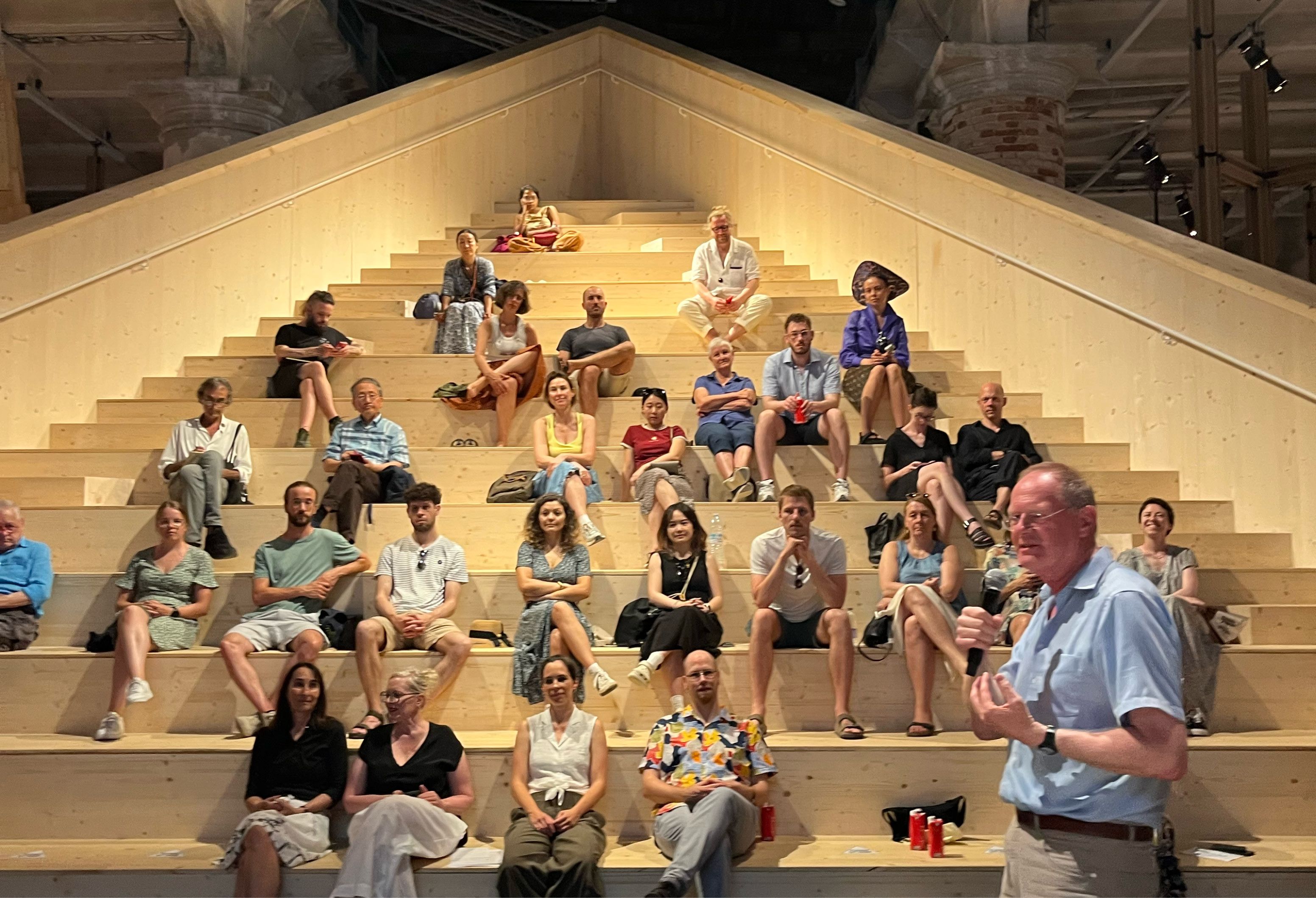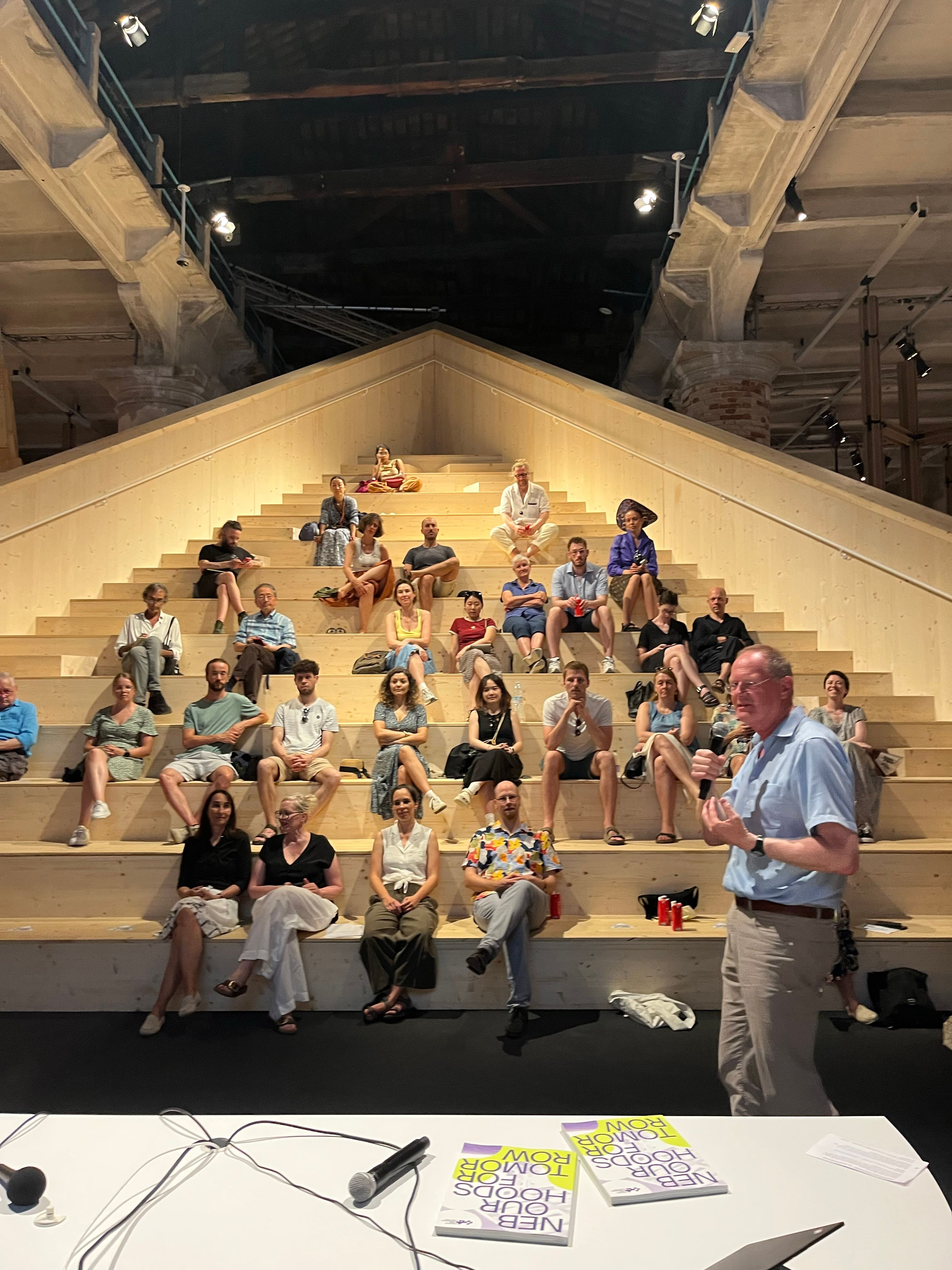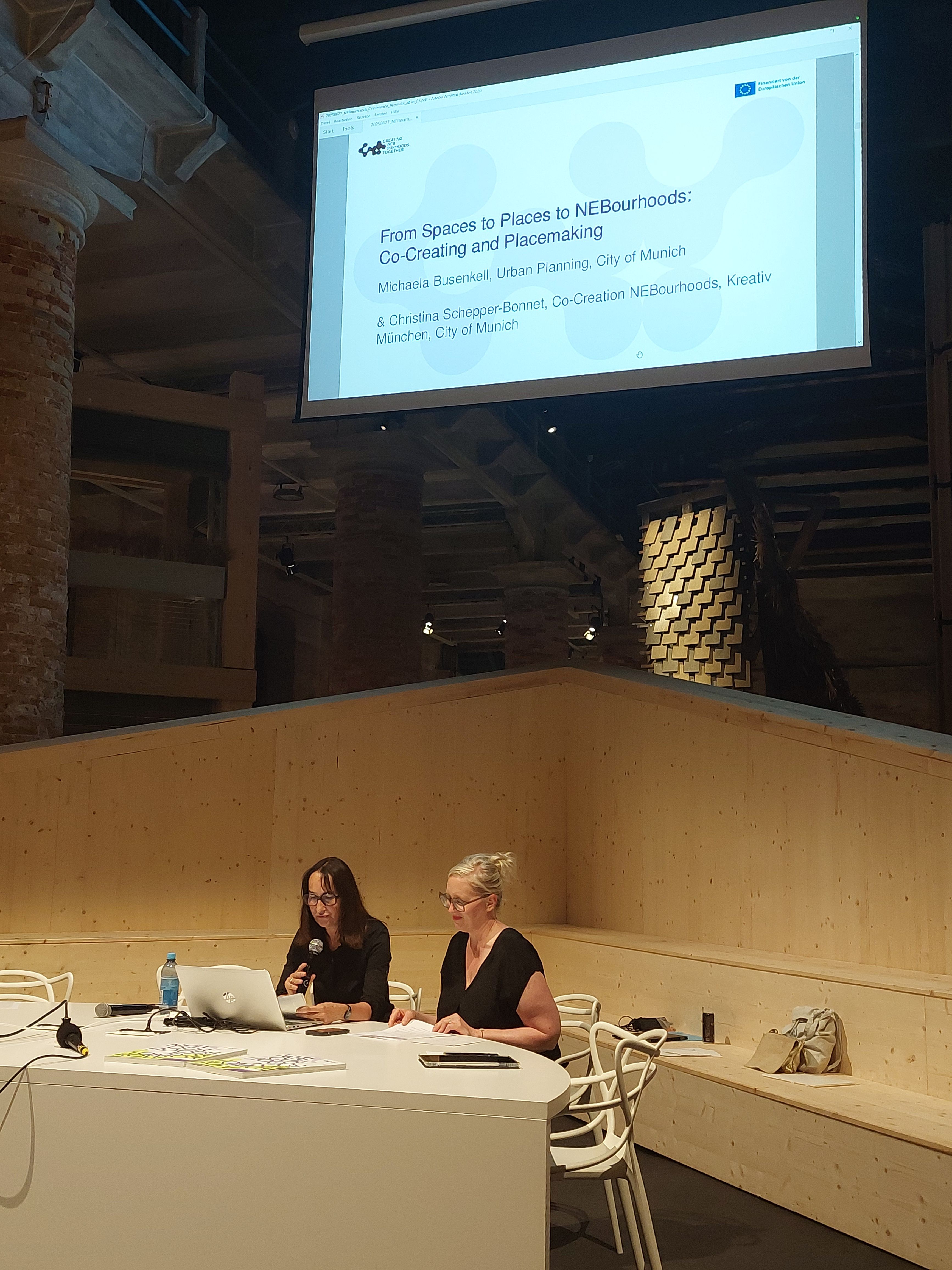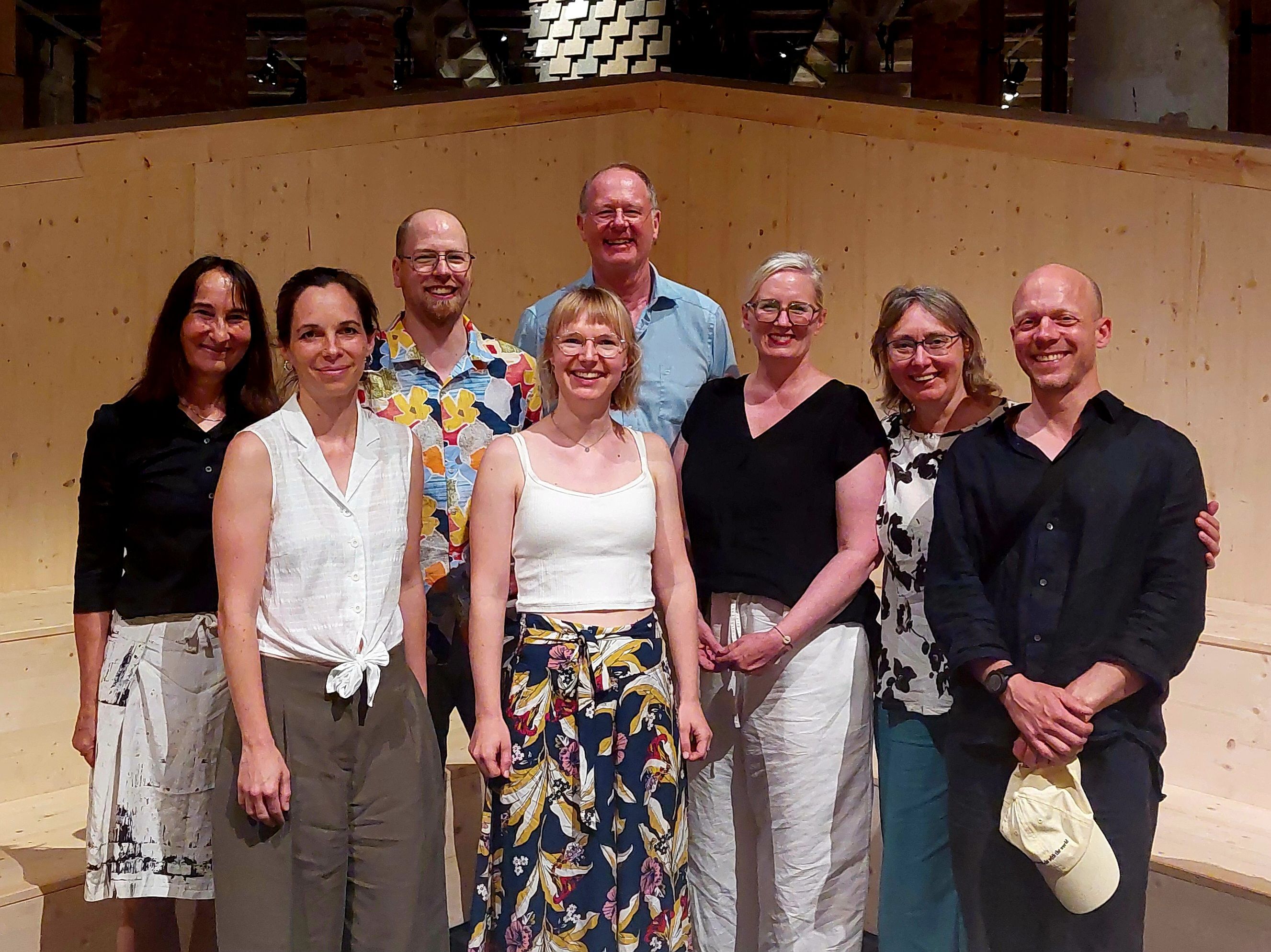NEBourhoods Conference at the 19th Architecture Biennale in Venice

27 June 2025. Talking about sustainability in Venice: this is highly symbolic, as the city has been renowned for the beauty of its architecture for over a thousand years – but today it is threatened by climate change, rising sea levels, mass tourism and maritime traffic. The 19th Architecture Biennale in the lagoon city offers a sign of hope. Under the title ‘Intelligens: Natural.Artificial.Collective.’, this year's event brings together solutions for sustainable construction based on natural and artificial intelligence and collective innovative power to counteract the climate crisis.
The New European Bauhaus (NEB), in turn, has initiated a movement to transform Europe into a climate-neutral continent. What could be more natural than to bring the NEBourhoods project, one of the first six flagship projects of the New European Bauhaus, to Venice? As part of the Biennale's supporting programme, the conference ‘Creating NEBourhoods Together: Regenerative Transformation’ took place at the end of June, and the NEB's values of ‘Sustainable, Beautiful, Together’ were linked to the Biennale's title. ‘To face a burning world, architecture must harness all the intelligence around us,’ said Carlo Ratti, curator of the architecture exhibition.
Nicola Borgmann, head of the communications team for NEBourhoods and member of the curatorial team for the German Pavilion, and Werner Lang, NEBourhoods Founding Partner and Vice President for Sustainable Transformation at the Technical University of Munich, opened the conference at the Arsenale and emphasised the urgency of a holistic understanding of sustainability. Project manager Sylvia Pintarits introduced the principles of the New European Bauhaus and explained the overall NEBourhoods project, including its links to the integrated urban development of the city of Munich. Christina Schepper-Bonnet, head of NEBourhoods co-creation from the Kreativ München team, and Michaela Busenkell, deputy project manager, reported on placemaking with co-creative processes that also involve artists and creative professionals.
Three measures were discussed as examples. Christine Jakoby from Studio Animal Aided Design presented the toolbox for the inclusion of wild animals and the planning of their habitats in urban neighbourhoods. Charlotte Poppa from the Action Space Management department of the Planning Office presented neighbourhood hubs with sharing tools. Johannes Staudt and Carsten Schade explained their methodology, developed at TUM, for repurposing and converting vacant buildings to meet the needs of the neighbourhood.
The intensity of the final discussion reflected the audience's keen interest in sustainable and inclusive implementation in urban development. The New European Bauhaus and this biennial are sending out important signals. Through the collaboration of many other initiatives, institutions and stakeholders, Venice, the fragile city, will hopefully also endure.









